How to improve your WooCommerce Product Bundling
Product bundling is the method of including two or more products within a separate product bundle. This is arguably the most flexible part of product strategy since the containing products are already available. Using WooCommerce to create product bundles can be a great strategy.
This allows you to increase your revenues, but at the same time you are providing a complete tool-set to your customers, with products that work well together. Thus, today we’ll talk about WooCommerce product bundles, how to define your strategy and how to put it in place. We will also see how bundles may benefit online stores in general, and how they can affect your customers.
There’s a deep psychological effect in product bundles. We, as humans, like to finish things. That’s why we love so much crossing a to-do list item or completing a set of collection cards. But research shows that this behavior also extends to product sets. After all, we do want to have the complete set of products of the same brand.
Product bundling is the method of including two or more products within a separate product bundle.
The benefits for your online store are clear. You are selling more; you are increasing your customer loyalty, increasing your store’s metrics. Additionally, there are amazing benefits for customers as well, as long as we create good product bundles.
Your customers may be able to achieve way more than what they were hoping for. They may discover products that they wouldn’t buy otherwise. They may achieve faster results if your product bundling strategy is correct.
Yet, bundling products is not as easy and as arbitrary as you’d think. There are a few bundling types to chose from. Also, you may run into some technical limitations, depending on how your store is set up. Not to mention that we don’t want customers to think we are pulling products towards them. We don’t want to leave a feeling that our product is incomplete.
Thus, that’s what we’re going to do today. We’ll find out how to create great WooCommerce product bundles and why you should do so. We’ll find the best strategies and avoid the common mistakes. And in the end, we’ll see how to measure your results and how to adjust your strategy.

What are Product Bundles in WooCommerce
The general definition of product bundles is the offer of multiple products and services as a single package. And I’m sure you’ve seen it before. You can buy a computer and it comes with an operating system. You can buy a car, and get a discount on your insurance. You keep your money in a bank and they may reduce your monthly charges.
As we’ve mentioned before, there are clear benefits for store owners and for customers. Here are some of the benefits:
-
- Higher average ticket – you expect more money for each of your sales, this means that you can have a higher revenue per customer, and you can allow yourself bigger marketing efforts to bring each customer
- Higher customer lifetime value – Not just each ticket, but also each customer is worth more.
- Increased convenience for customers – they get a complete package with products that work well together
- Product discovery – your customers may not even know that some products work well together, this is your opportunity to show them this
- Reaching a wider audience – your products alone may not be able to satisfy certain needs, whereas when you combine them they’ll be able to do so
There are some opportunities for partnerships in product bundling as well. You may want to cross-sell some products that aren’t yours, and you can do that at a commission. If you sell products from different brands (similar to what a grocery store does) you can create packages from different products or promotional packages.
WooCommerce helps you in product bundling as well. There are many plugins you can use for this, and for other types of product bundling. If you benefit from cross-sales, related product or product groups sales, it’s possible to do that with a few clicks.
Product bundling strategy
In practical terms, there are many ways to implement your WooCommerce product bundles. Let’s cover a few general strategies as well as some examples.
When it comes to bundling products, a clear design is needed. So, your users will understand the possibilities, and which products should be bought together. Here are the most common ways to implement product bundling:
- Grouping products as a kit
- Related products
- Cross-selling & up-selling
Product kits
Product kits work great for similar or complementary products. Camera and lenses. A laptop and an operating system. A sewing kit. A cell phone and accessories. In terms of implementation, kits for WooCommerce product bundles will often present themselves as optional items.
The Woo team has created the Composite Products plugin, which can help you with that. This plugin can be used to create product kits, sell products in bulk and create product configuration pages. Their examples are great in showing how this works. For example, their Skateboard building page shows how to create products with many components. It also shows how your users can configure and remove parts if they want to.
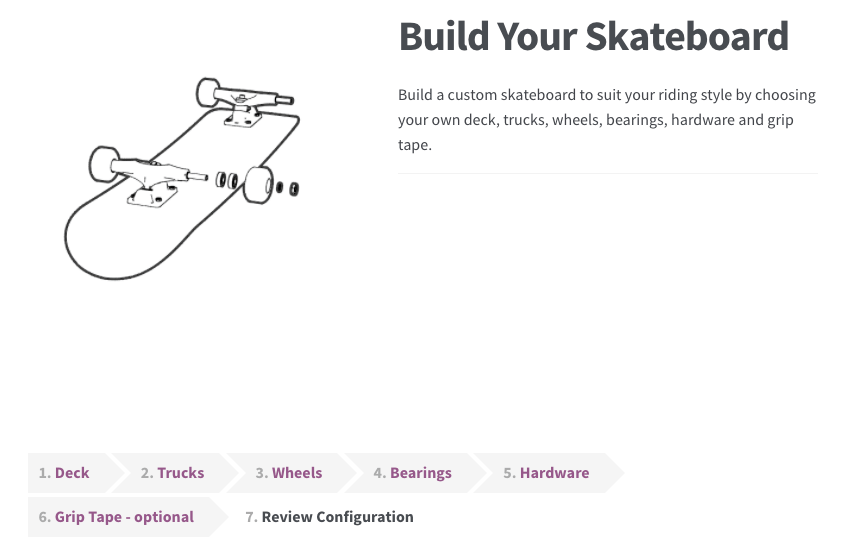
And this is how the cart looks like after you’ve configured your product.
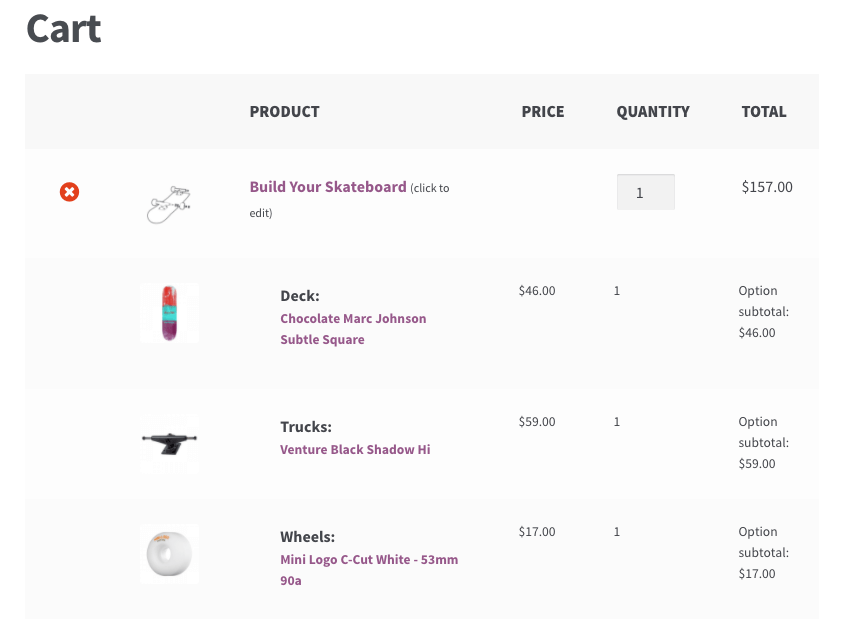
Related products
The related products approach is subtler. This is often used in big e-commerce sites. Check out how Amazon does that:
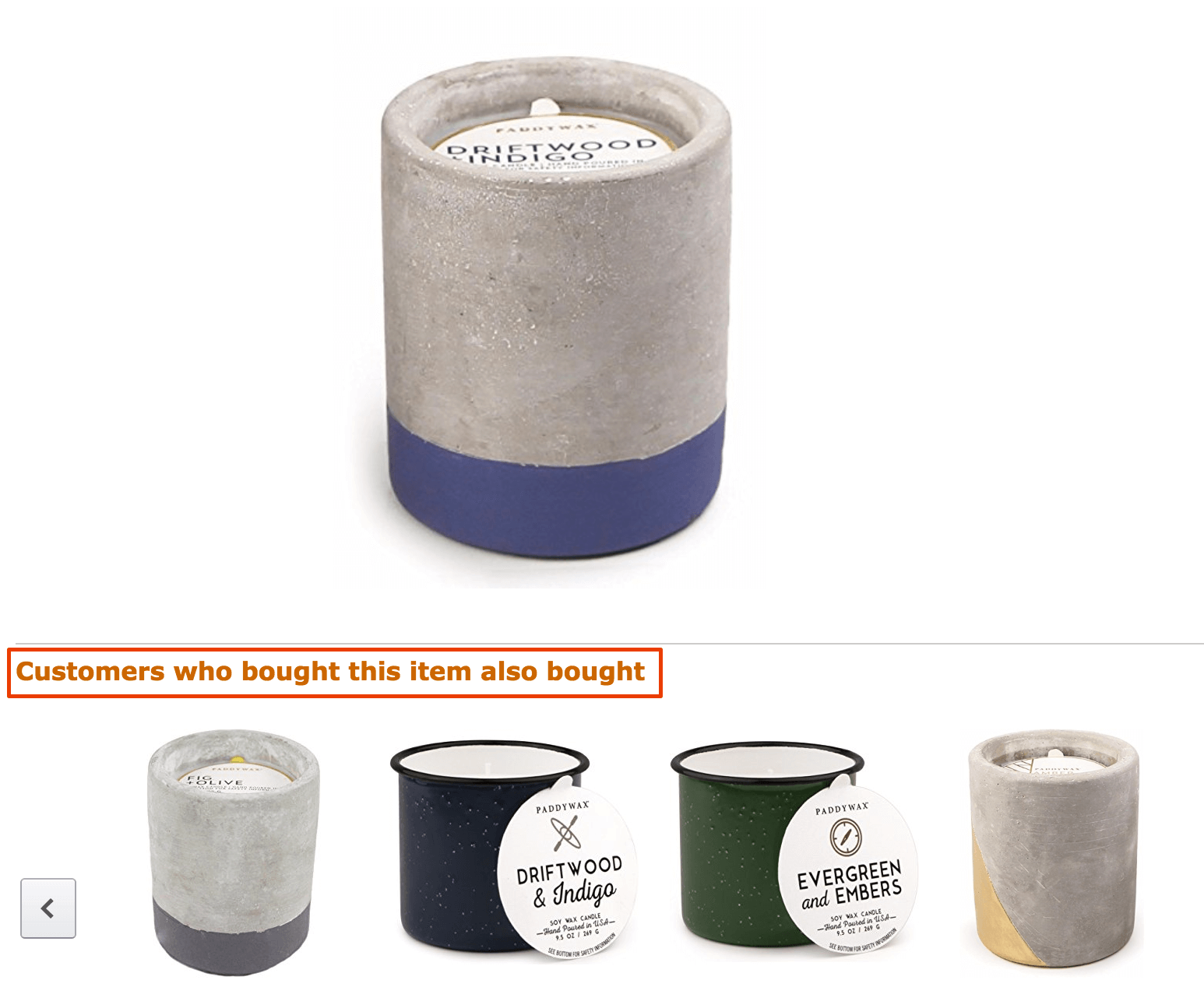
They aren’t going to say: “hey buy this product as well”. No, the approach here is quite subtle. Check out how they phrase it: “Customers who bought this item also bought”. They are saying “if other people bought these together, why wouldn’t you?”.
This is a great strategy when your products work well together, but they aren’t quite a kit. They could be similar products. They could be products from other brands or end uses. Here is your chance to get creative and try to showcase products that work well together.
WooCommerce comes with a Related Products feature out of the box. To learn how to use it, you can visit the official WooCommerce Related Products guide.
Cross-selling & up-selling
Now on to the last type, the cross-sell and up-sell. Cross-Selling products is very similar to the product kits, but it is often a bit more aggressive. Usually, you approach a customer after they have added a certain product to their cart, or when they are checking the product page.
There are many ways to implement cross-selling in your WooCommerce store. WooCommerce comes with this feature by default. Also, the Boost Sales plugin may be a good call for you.
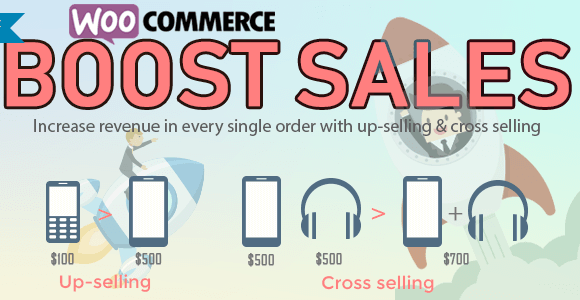
It will allow you to proactively offer related products as soon as your customer clicks the Buy button. This can increase conversions in related products and you may give your customers progressive discounts as well.
Using past data for your bundling products strategy
Now you’ve defined your tools, your strategy and you want to get ready and start bundling. Where should we start? Which products should we offer?
Well, there are many ways to look at this.
There’s your market’s data. You can look at what sells the best in your market, which products are sold together and follow along. This is a good strategy if you are just testing the waters and want to reduce your risks.
A natural development of this strategy is looking at your competitors. After all, your neighborhood may differ from the general market data. Sometimes your niche, in particular, has different products or customer needs. Thus, in these cases, the perfect product bundling strategy may be already implemented by your competitor.
Sometimes, though, you may not have this kind of data. Maybe your competition doesn’t have a good product bundling strategy. Maybe your market doesn’t have a clear path of products that work well together. Well, in this case, you may look at your own database.
Let’s see some different ways that you can use to get insights on which products usually are most often purchased together.
Exploring past orders and wishlists
One of the best ways to find how to bundle your products, is by exploring the past orders of your customers, as well as their wishlists (if you are using a wishlist plugin). The idea is to find all the customers who have purchased a selected product and then find which other products they have also purchased or wish to purchase.
In order to achieve that, you would first need to find the customers who have bought a selected product:
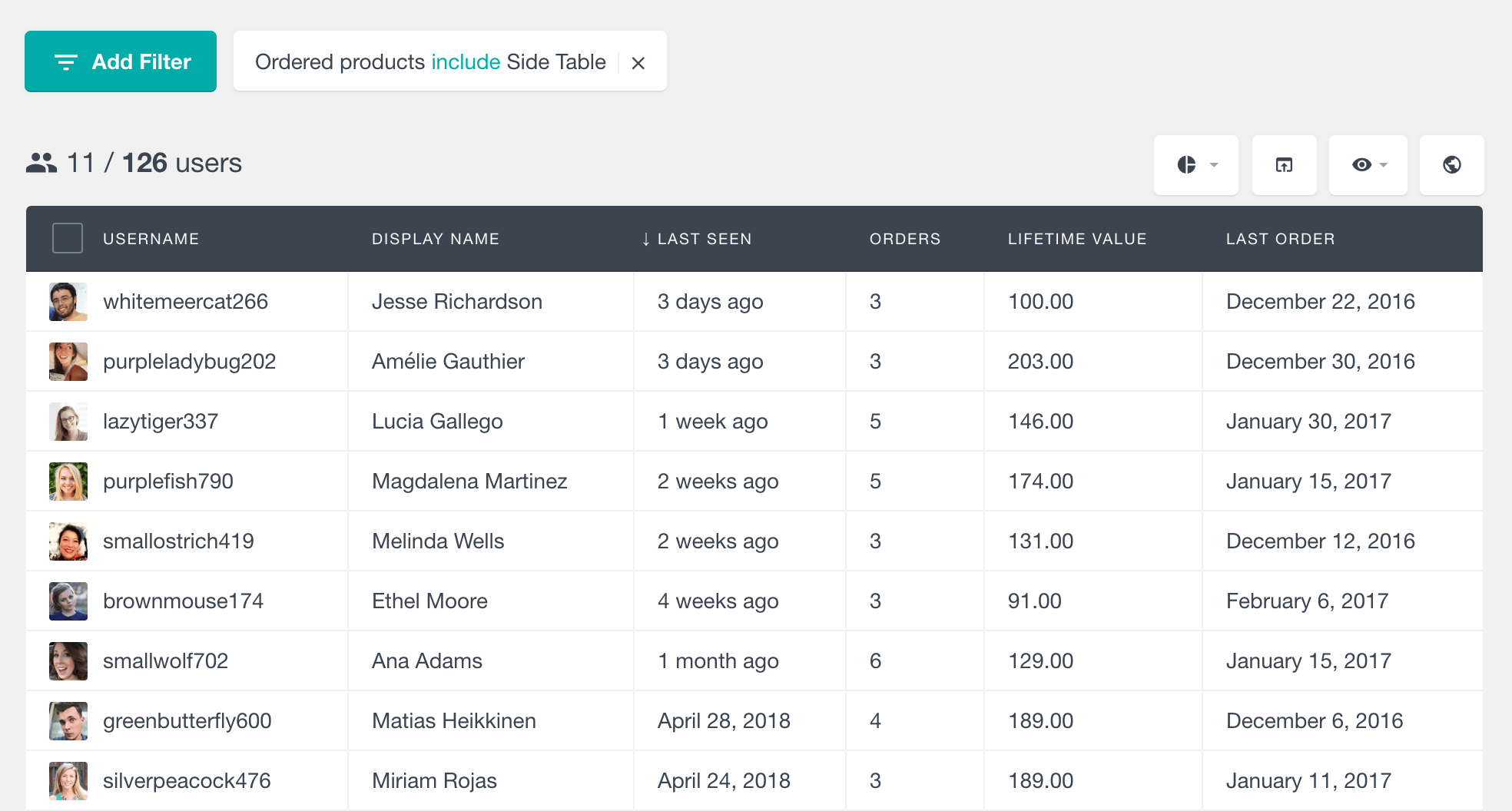
Then you can open each of those users’ profile and explore their purchase history and wishlist products:
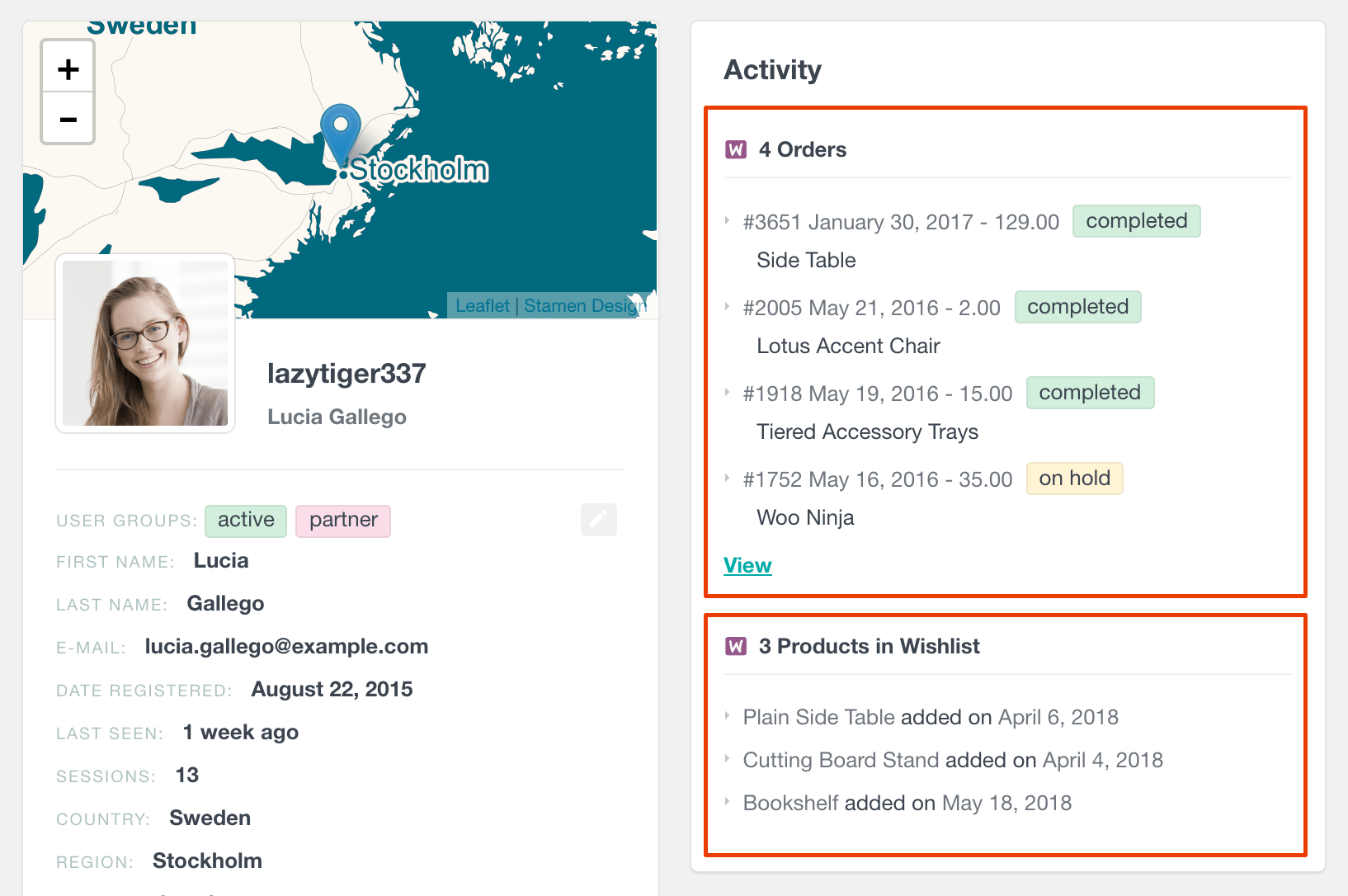
Once you do that, you should have a list of related products that are often purchased together. The next step would be to find which of these related products are the most purchased along with the selected product. To do that, you can run a combination of “Ordered products include” filters for each product and compare the numbers:
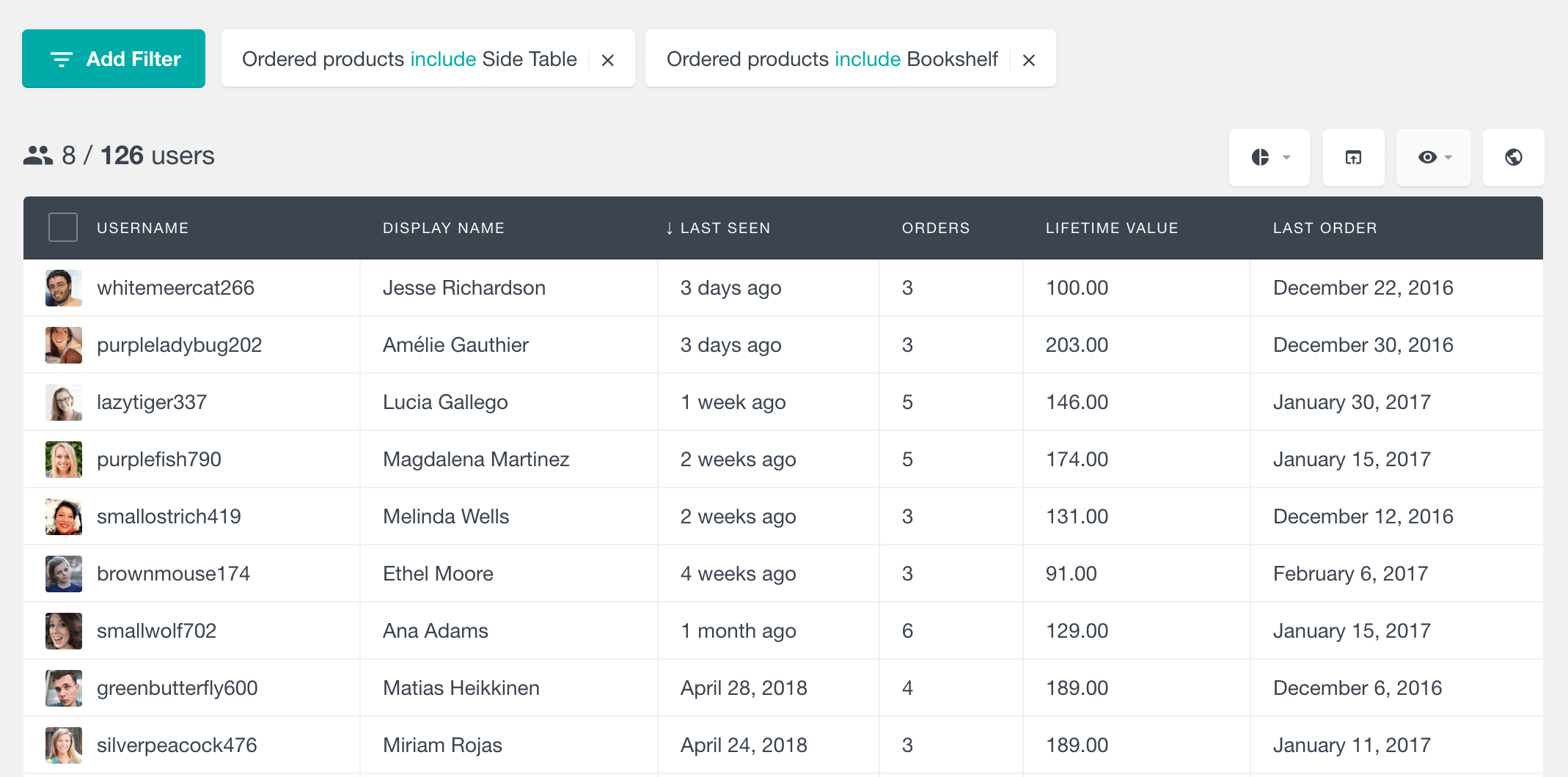
You can even stack up more filters if you need to and create bigger product bundles.
Survey your customers
You can use plugins such as Users Insights and Gravity forms to survey users and find out what they like the most. You can also use Users Insights to find which products have already been bought by the same customers.
In order to survey your customers, you just need to filter out which ones have bought a certain product. Then export these users, via the export button:
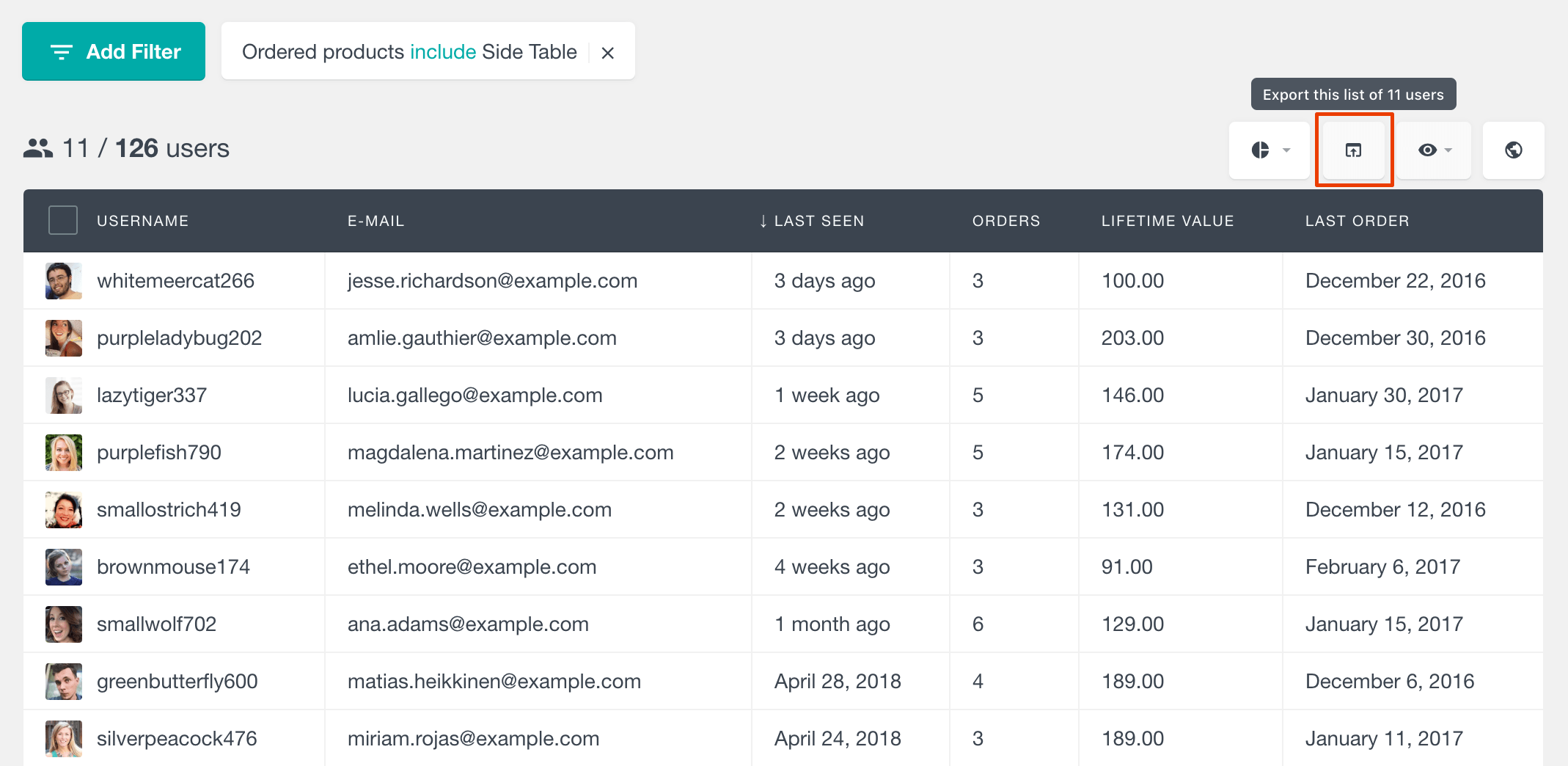
Next, you can use a mailing software such as MailChimp to get in touch with your users. From there you can send a link to your Gravity forms questionnaire. Then you can either use Gravity forms or use Users Insights to get your results. Via Users Insights you can filter out all users who have replied that form.
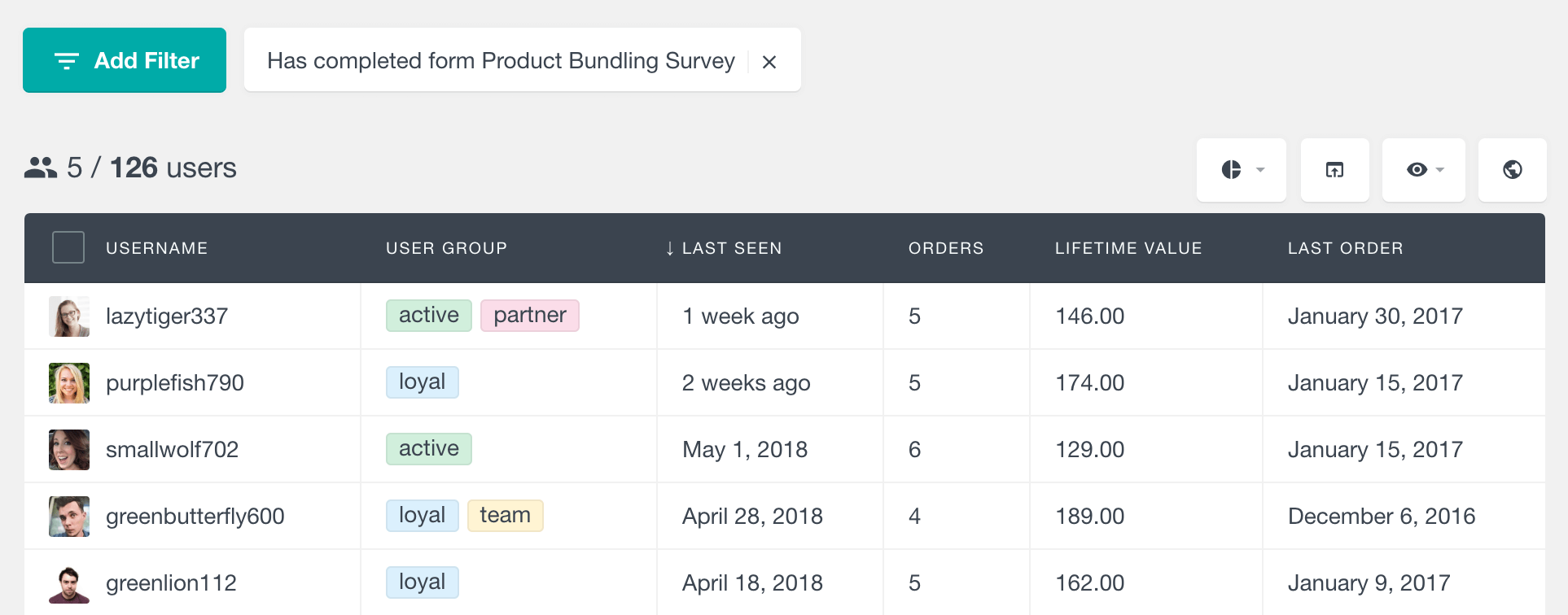
Then you can check the user reply ratio for each of your questions and analyze your results.
Conclusion
Today looked into product bundles in WooCommerce and in general online stores. We learned the advantages of product bundling and the risks of this strategy. We also saw which plugins you can use in your WooCommerce site for product bundles. Finally, we learned how you can use Users Insights to extract past user orders and define your product bundles.
We hope you enjoyed this article and see you again next time!
